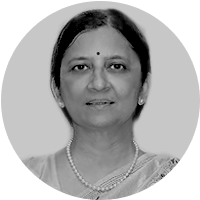
PROJECT
Technology Thinking for eLearning
Technology thinking is the basic thinking process involved irrespective of howmuchever sophisticated technology is to be used for teaching of any content. It would comprise thinking related to content, and the pedagogical (or andragocial) decisions for teaching of that content. A person having capacities of high level of technology thinking is able to give rationales for the choices made for teaching – learning, evaluation and ICT tools chosen for a particular piece of content. If hardcore technological usage is the chery on the icing, the technology thinking is the sound foundation and base of the cake. Without ensuring the enough thinking given for this base as to what and why a particular choice, the topping cannot be fully exploited and cannot be best utilized for the purpose. The OER course will comprise of all the necessary components required for technology thinking.
As Bill Gates says content has been and will always be the king. Hence, whether one wishes to teach face-to-face / blended mode / online mode, to understand the nature of content is the basic step. The CDT (Component Display Theory) matrix is used for this purpose. It is the nature of content which demands a particular way of handling that content. Similarly what the learners are intended to be able to do at the end of the teaching-learning session, ie, the learning outcomes, is the next important aspect. For putting forth the learning objectives the taxonomy of objectives given by Anderson and Krathwohl is used where the thinking of abilities from remembering to creation are taken care of in context of cognitive domain. They are also known as Revised Bloom’s Taxonomy (RBT) as the basic hierarchy was given by Bloom. The two-dimensional table of CDT and RBT gives better understanding for the how the content needs to be handled in terms of teaching-learning strategies as well as in what manner evaluation could be best done. The OER course deals with the overview of various teaching-learning strategies as well as evaluation strategies. Since the context at present is of elearning, the understanding of the exemplary ICT tools and the possibilities within each tool in terms of teaching, learning and evaluation need to be clear. The most important aspect to be kept in mind is the ICT tools may change, the sophistication within them may vary, but once the basic technology thinking is clear to a person, one will be able to work in any elearning situation – may it be the highly sophisticated one or may it be the basic one. In fact such a person is better equipped to make fit-for-purpose choices rather than the getting fascinated by any technological advancement. Once all these components are clear then it becomes easier / logical to prepare a comprehensive planning for the entire elearning episode.
During this OER course the learners will be gradually introduced to the concepts of CDT, RBT, instructional strategies, evaluation, ICT tools week after week. Three weeks will be devoted for these components. The climax will be the comprehensive planning table they will develop for their own content for which the fourth week will be devoted. The learners will be assessed through both formative and summative manner during the course. The learners could be asked to submit a plan in the beginning of the course and they could be asked to submit the comprehensive plan at the end. This will help them see the process of growth for themselves.
The various OERs as well as self-developed resources planned for this are of various types ranging from pdfs (pure text and text plus graphic), PPTs, videos, ebook, etc.
Author

Madhavi Dharankar
Dr Madhavi Dharankar is an Associate Professor and Head of Department of Educational Technology at SNDT Women’s University, India. Dr Madhavi is also SWAYAM Coordinator of SNDT Women’s University. She obtained her PhD (Educational Communication) from Yashwantrao Chavan Maharashtra Open University on ‘Comparative Study of Behavioruistic and Constructivitstic Techno-andragogical Approaches in special reference to Teacher Education’. She has contributed as subject matter expert in projects like NMEICT and ePG-Pathashala.
Mentor
Vasudha Kamat
Prof. Vasudha Kamat is well known for her significant contribution to the field of Educational Technology/ Information and Communication Technology (ICT) in Education. She was Vice Chancellor of SNDTWU during 2011-16. Prof. Kamat is a member of National Education Policy Committee constituted by the Government of India in 2017. In March 2019, Commonwealth of Learning (COL), Canada appointed her as Honorary COL Adviser. She is Fulbright Scholar and also Best Teacher Awardee from Maharashtra State, India.
Mentor

JAYASHREE SHINDE
Prof. Jayashree Shinde is a Director of the Teaching Learning Centre at the Department of Educational Technology, SNDT Women’s University. She obtained her PhD from the SNDT Women’s University on interactivity levels of multimedia. She is on various committees of MHRD, UGC and NCERT related to OER development.

